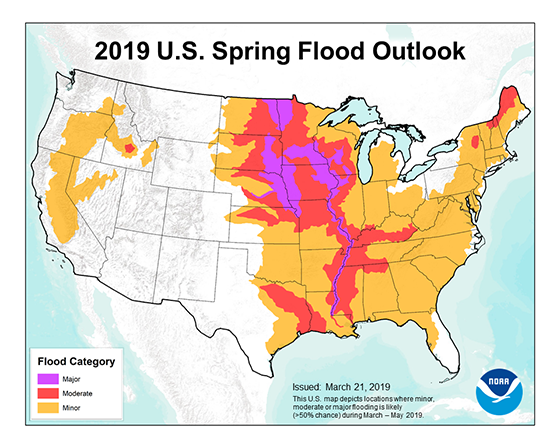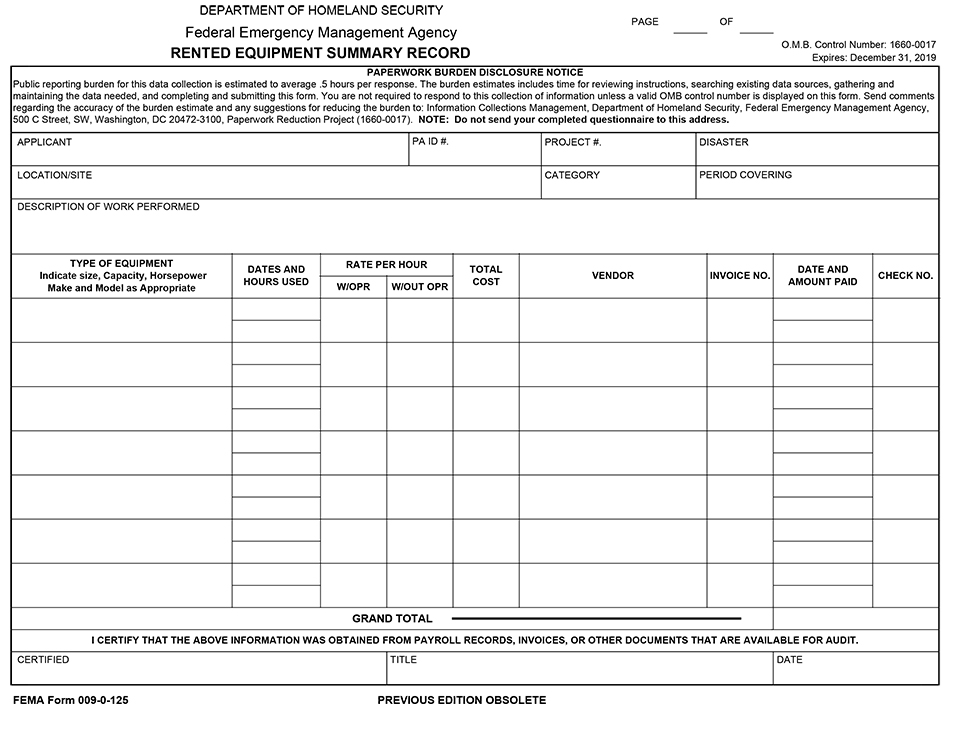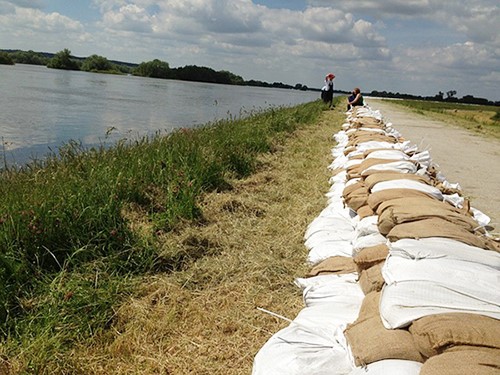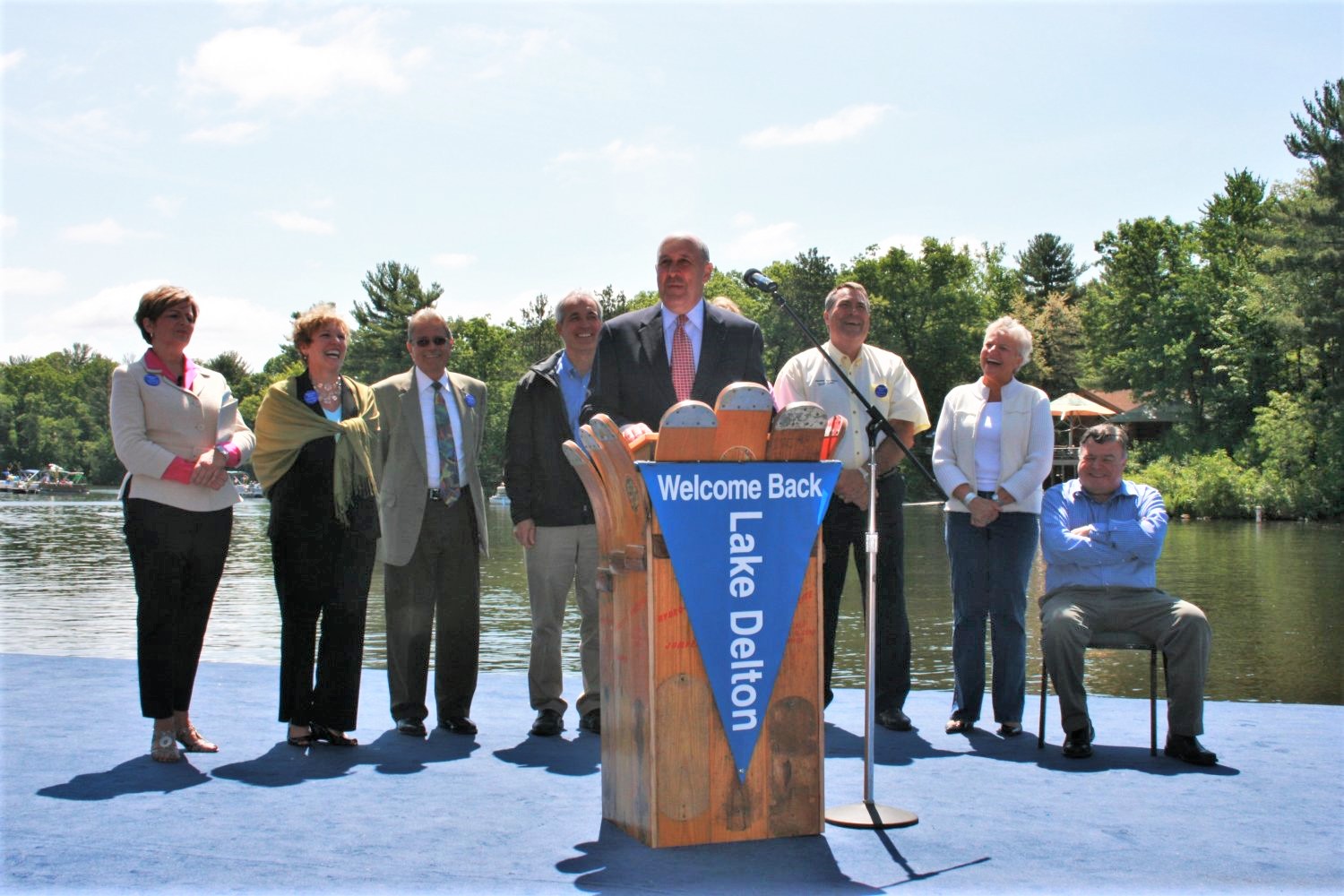The National Oceanic and Atmospheric Administration’s (NOAA) Flood Outlook Map is dismayingly colorful this spring, with over 200 million people at risk for flooding in their communities. Flooding across the Midwest as triggered by the recent “bomb cyclone” has devastated large swaths of the region, much of which is still recovering from flooding events of recent years. And, for many, the rainy season is still to come.

Spring Flood Outlook Map courtesy of NOAA
There are many ways in which a community can make preparations pre-flood, but what steps do you need to take when you’re in the middle of, or immediately following, a flooding event? The list is long and detailed. At the top, keep people safe. After that, re-establish normalcy. Then, begin to rebuild.
However, there are many critical steps in between. Communities need to be prepared to save, secure and document a detailed list of time, materials and equipment related to flood recovery in order to receive needed relief funding or reimbursements.
Tracking imperative details
In the middle of responding to a natural disaster, the documentation of time, damage or materials may not be top of mind. Taking the time to organize the documentation paperwork and create a plan ahead of time will help you gain efficiency and improve your chances for monetary reimbursement after the event. What is required for documentation can also vary per state or federal guidelines. If a national disaster is declared, for instance, communities will need to adhere to FEMA conditions and fill out the requisite FEMA Public Assistance Project Worksheets.

Example FEMA Public Assistance Project Worksheet
Some other areas that will need attention for either state or federal assistance are the following:
Timesheets. Keep a detailed record of the number of hours dedicated to each task, both paid and volunteer. Be specific. Five hours for “flooding assistance” is not specific enough. A better example would be: one hour operating a skid steer for debris removal, one hour for photographing damage, one hour for general street repair, one hour operating an excavator for street repair, one hour assessing damage at the lift station.
Staff efforts expended during the normal course of a work day generally will not be counted unless overtime is required to complete the needed activities. Contracted help will need to be justified and those hours logged in detail as well.
Equipment. Make note of all particulars related to renting or purchasing of equipment. Summarize what the equipment was needed for, write down its size, capacity, horsepower, make, model, equipment code number, operator’s name, dates of use and hours per day of use.

Materials. Provide a detailed description of all materials purchased. Summarize the intended use of the materials and be specific about the type and description of the materials, the vendor, what quantity was purchased, the price per unit, date purchased, as well as the date and location used.
Invoices and Receipts. Keep all invoices for equipment or materials purchased or rented, services or consultants hired, or other expenses related to flood recovery efforts. Make notes on invoices as to what, specifically, the purchase was for and/or what the equipment or material was used for. Include receipts for costs pertaining to landfill donations, etc.
Damages. Document as many areas of damage as possible, including written, photographic and video records. There is no such thing as too much detail, even though it can be an exhaustive exercise. Make note of areas of ponding (the unwanted pooling of water), roadway and neighborhood flooding, areas of damage to buildings or infrastructure such as bridges and dams, debris, flooding in homes and basements, sewer backups, etc.
Funding for flood recovery
Now that you’ve diligently gathered all the necessary paperwork and documented every detail of every day, what’s next? You need to be sure to submit for funding relief in a timely and organized manner.
For larger, national disaster declarations, hazard mitigation applications should be submitted directly to FEMA, and need to be sent within 90 days after the flooding event. Applications for funding from CDBG Disaster Recovery and the Emergency Assistance Program also are currently due within 90 days of the flooding event.
More localized funding and available programs differ by state. In Wisconsin, for example, the Wisconsin Flood Control Grant Program provides 50-percent in grants for the remediation of structures (both residential and commercial) that are located in the flood plain and sustain damage.
If you’re looking to find out which programs best suit your needs, our in-house funding specialists can assist. From required documents to funding application submission, we’re here to help. Let’s start a conversation.
Full-service solutions
MSA is well-versed in helping communities through all phases of flood preparation, response and recovery. From the completion of a preliminary flood emergency plan to the creation of advanced 2D floodplain maps or the use of our Aerial Solutions team to make critical infrastructure assessments from the air, we can help ensure you are best prepared for any potential future event.
We have also helped communities rebuild after a disaster, with a critical eye to damages incurred, a thorough inspection of assets, the pursuit of funding, and the design, bidding and construction of necessary repairs.
Our goal, in everything, is to help make each community stronger, safer, and more resilient for generations to come.

